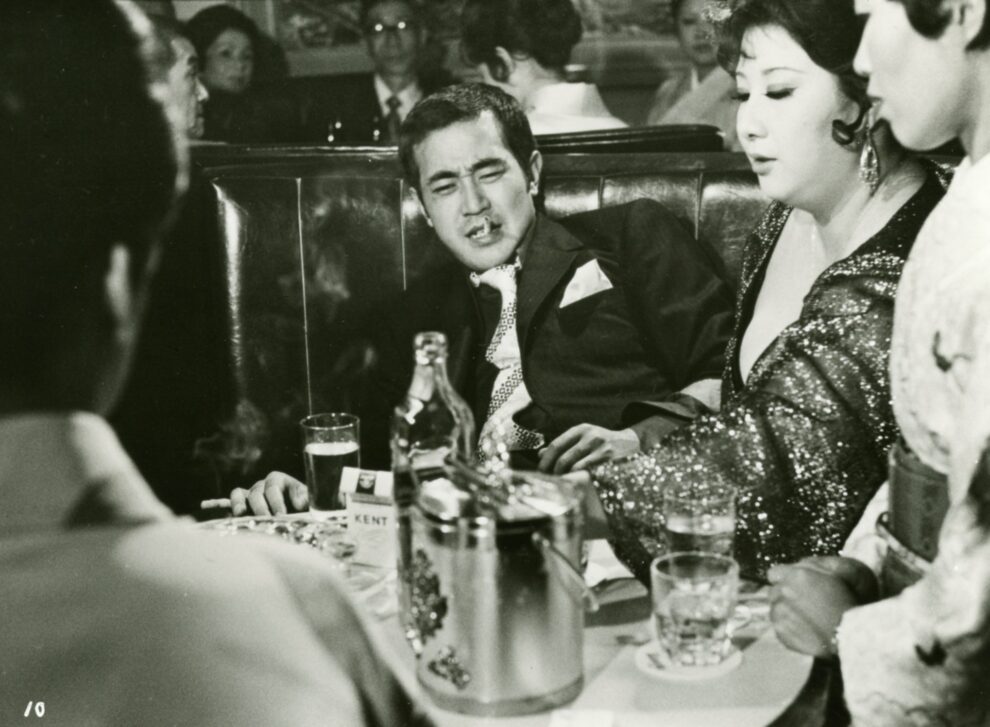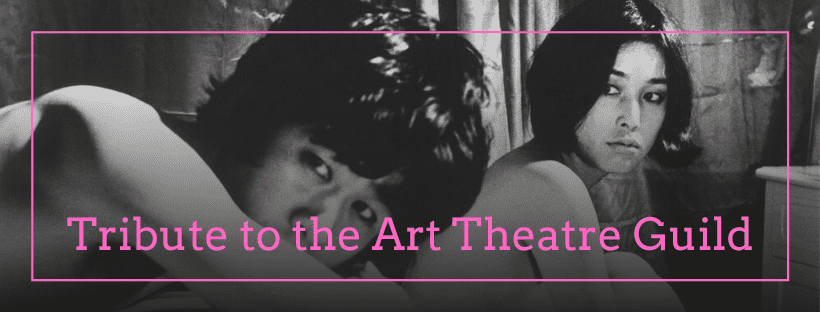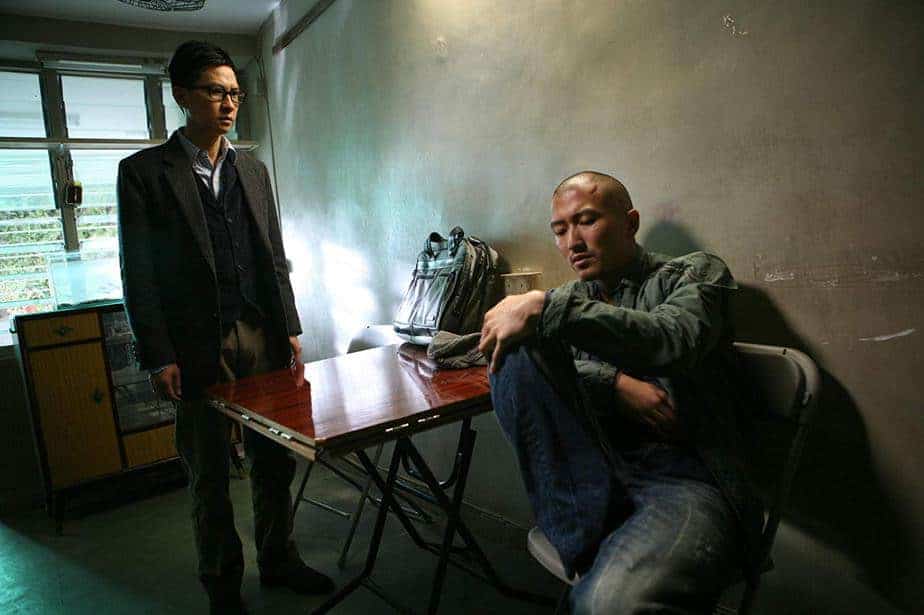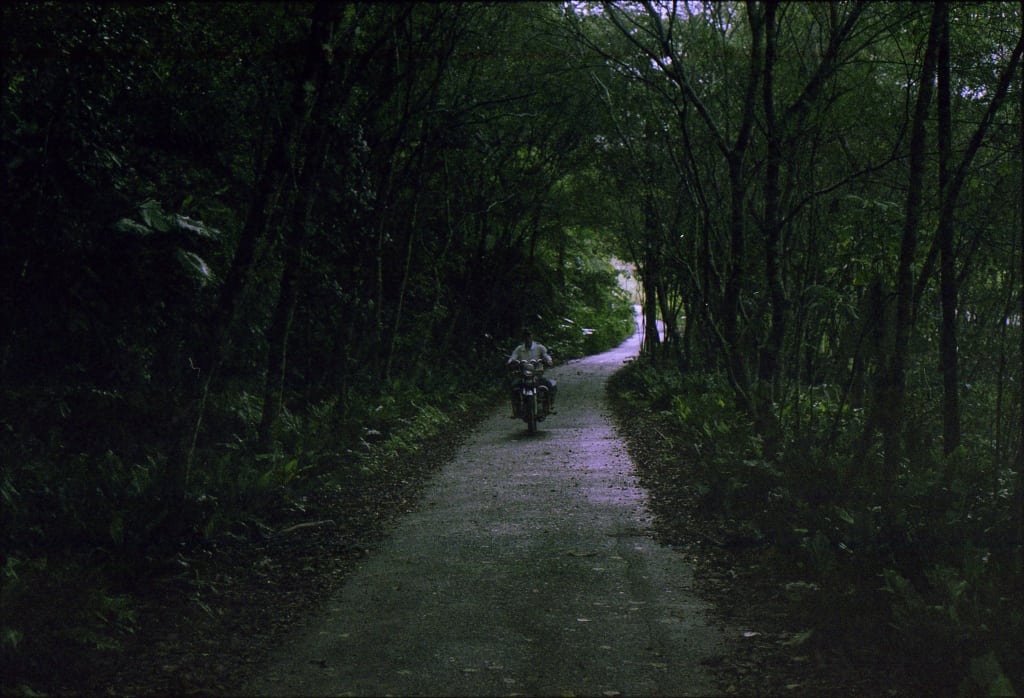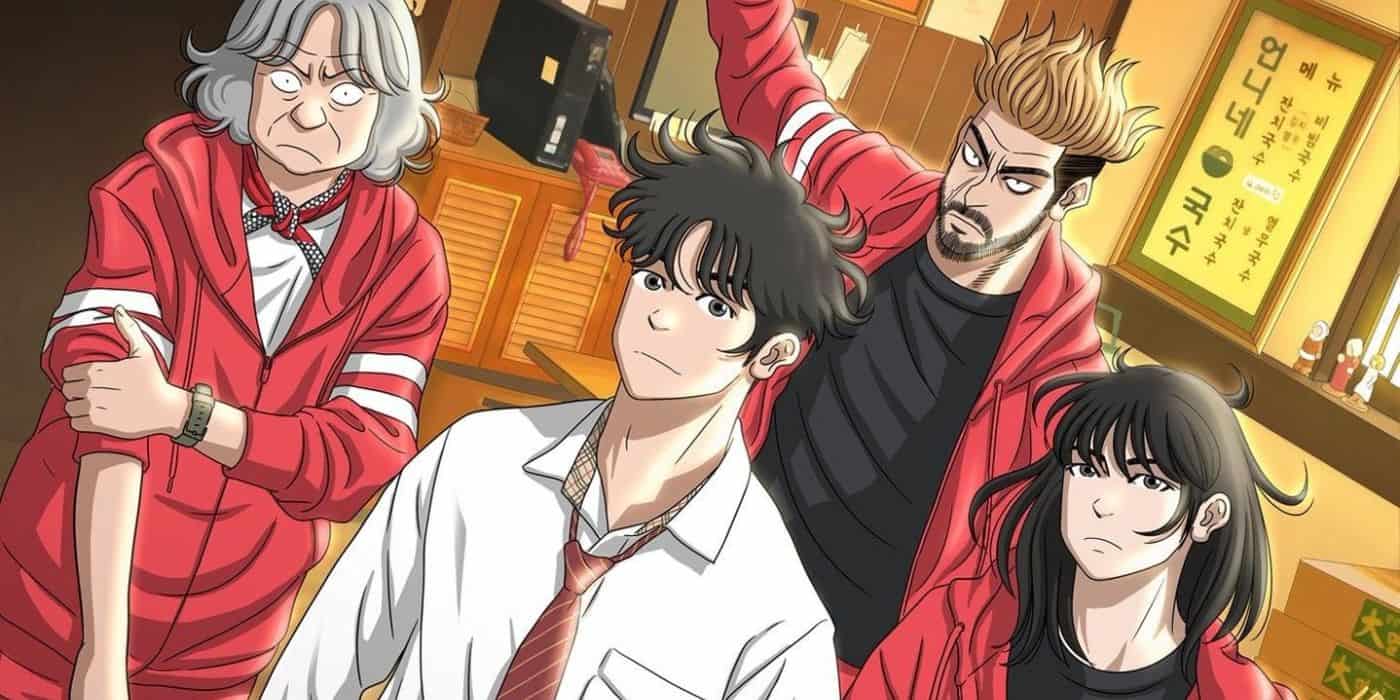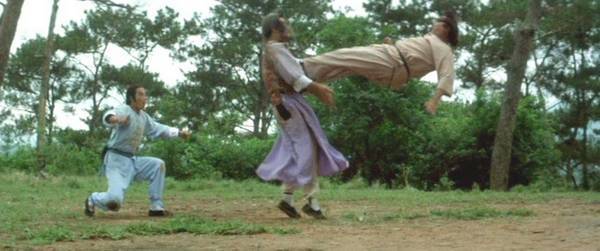1973 signaled Sadao Nakajima's first and last collaboration with ATG, with “Aesthetics of a Bullet” featuring some of the trademark elements of the company, including punk aesthetics, a genuine anti-hero, social commentary, while the artistic freedom ATG always granted its filmmakers, allowed Nakajima to retain his favorite Yakuza theme and include intense exploitation elements.
The movie starts with a rather impressive scene, where under a loud punk track that is also an ode to the overall punk philosophy, Nakajima sets the frame the story of the movie takes place in, showing people overbying, overeating, overpolluting while enjoying themselves in sex shows and hostess clubs. The protagonist, Kiyoshi Koike, is a direct product of this setting, as we first meet him peddling supposedly dwarf-rabbits on the street, only to make enough money to waste on drinking and gambling. His girlfriend, a prostitute, loves him dearly and is even willing to continuously give him money and even suffer the occasional slapping, not to mention she also has to foster his rabbits in her apartment. One day, however, when Kiyoshi becomes even more despicable than usual, decides that she already had enough and kicks him out, worsening his situation even more.
It is at this time that he is picked by some yakuza to play the role of a bullet, sending him into enemy territory in Kyushu to stir a fight with an opposing gang, essentially sacrificing a buffoon in order to achieve their goals. Kiyoshi, who has no idea what is going on, decides to buy a shiny yakuza-style costume and get a fitting haircut, and proceeds on doing what he knows best: cause trouble in every step. Despite the his ignorance, he actually fulfils his goal, and even manages to get a girlfriend in the process. Losers, however, never win.
Check also this interview
1973 proved a big year for the deconstruction of the yakuza on cinema, with Kinji Fukasaku releasing the first three parts of the Yakuza Papers, with the reality of “the life” finding its way into cinema in the most “in-your-face” fashion. Nakajima was definitely part of this ”trend”, with “Aesthetics of a Bullet”, however, being at least as much a character study and a critique of the way capitalism functioned in Japan at the time. To begin with the first aspect, Nakajima introduces us to a true loser, a man who just functions with his instincts without being able to think even for a moment, thus becoming fodder for powers higher than him, and particularly the Yakuza, highlighting in that way, how these criminal organizations handled their recruiting. Kiyoshi has a couple of “saving” qualities, seems to be quite a strong fighter and also to have an appeal on women, but none of these two can actually save him, as the two main females he meets in the story are eventually turned away by his ways, and his power actually brings him into more trouble.
The fact the he is a dreamer, and essentially the concept of dreaming, is particularly mocked by Nakajima, presenting him as a man who thinks he is great without realizing how “little” he is, while connecting him with the concept of how capitalism treats people who only dream, but have no clue what they actually want or how to achieve it. As we watch him initially moving from menial job to supposedly clever selling and vice versa, failing each and every time, the aforementioned becomes quite evident, with the system essentially highlighted as one as bad as the yakuza (who are actually a part of it), and the punk lyrics communicating the fact even more eloquently.
At the same time, the film also moves quite deeply into exploitation paths, with the sex scenes becoming both numerous and lengthy, particularly after Kiyoshi becomes a yakuza in his mind, and the violence following suit, at least when the two are not co-existing. Gorgeous Miki Sugimoto plays a crucial part in both, with the part that focuses on the relationship of the two, however, being disconnected from the rest of the narrative, to the point that it becomes obvious that this is a kind of fan service rather than an integral part of the story.
Toshio Matsuda's cinematography captures the grittiness, dead end-ness and tension of the story in the best fashion, with the many close ups and the shaky camera working particularly well in that regard. The best production value, however, is definitely the editing, with the initial and last punk music video sequences and the overall frantic pace with the occasionally abrupt cuts setting the tone for the whole movie in the most fitting fashion for the story.
Regarding the acting,Tsunehiko Watase gives an astonishing performance, managing to be equally comedic, dangerous and tragic, fighting left and right, waving his pistol, having violent sex or acting like a big shot yakuza in the most caricature way, in a truly great effort that anchors the movie from beginning to end. The taxi driver scene is bound to stay in the mind of any viewer.
“Aesthetics of a Bullet” is a great movie, a truly excellent sample of the intelligent exploitation Japan produced in abundance in the late 60s and 70s, as much as a testament to the quality of local cinema when the filmmakers were free to shoot what and as they wanted.


